This chapter is written by my dear friend Miryamdevi, high priestess of the Jitterbug Cult.
Tom Robbins,
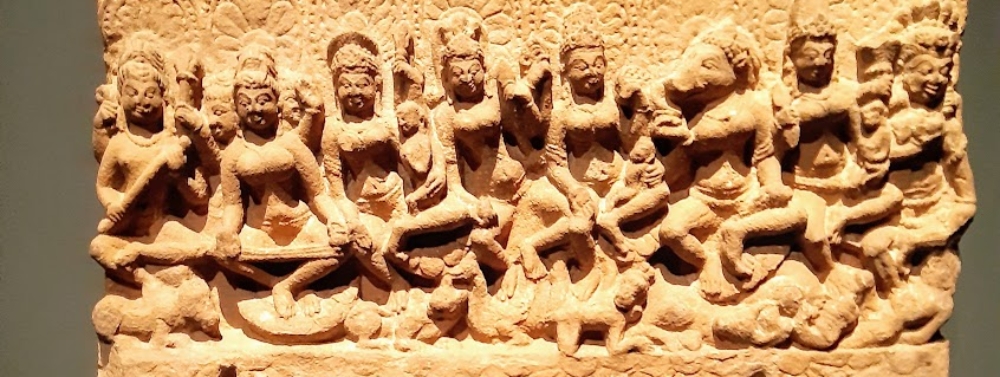
This chapter is written by my dear friend Miryamdevi, high priestess of the Jitterbug Cult.
Tom Robbins,
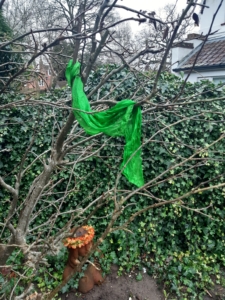
קצת ירוק בעין
היום ומחר, ברחבי העולם יחגגו את אימבולק/ברייד/קנדלמאס, אבל אצלנו בעדת הכאוס-קראפט או בשמה הלועזי אומנות הכאוס, חוגגים את יום הקסם/כישוף (רחמנא ליצלן) הירוק
?אז מה זה קסם ירוק ולמה עכשיו
ב -1 בפברואר, תאריך שהוא בערך באמצע הדרך בין יום ההיפוך החורפי ליום השוויון האביבי, נחגג אימבולק
האימבולק מסמל את “הינקות” – סימני החיים הראשונים ואת תחילת האביב. פרחים מתחילים לפרוח ואפשר לראות ניצנים קטנים על העצים. הטבע מתעורר לאיטו לאחר שנת חורף ארוכה
?אז מה כל כך קסום בצבע הירוק
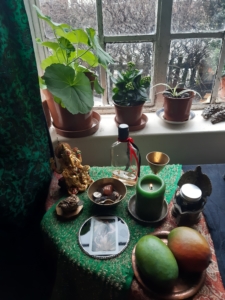
זה הזמן שהטבע בא להזכיר לנו שגם אנחנו צריכים להתעורר, להרפות מהעבר ולפנות מקום להתחלות, תוכניות וחלומות חדשים. באופן מסורתי אימבולק הוא פסטיבל לכבוד האלה בריגיד (בריגיד, ברייד, בריגיט). בריגיד היא אלת האש, הריפוי, השמש והאח. היא אלת הפריון והשירה
ירוק הוא צבע הטבע והוא מסמל צמיחה והתרחבות, יציבות וסיבולת. הרמוניה, ריפוי, פוריות, תקווה, אהבה והגנה. איכויות אלה מהדהדות עם בריגיד והשמש, שצובעת את הטבע בירוק, מרחיבה את הלב וממלאת אותו באהבה ובהתרגשות של חלום חדש. הגוונים הכהים יותר של הירוק קשורים בדרך כלל לכסף
אימבולק מסמל את התעוררות הטבע, התחלות חדשות ואהבה, היוצרים שער בזמן לקסם ירוק
קסם, שגשוג, ריפוי, הגנה, אהבה ושפע, הם נושאים שטוב להתמקד בהם בכל עת, אך יקבלו דחיפה מיוחדת אם נכלול אותם בשער אימבולק ובמזבח הירוק שלנו
אז לכו והדליקו נר ירוק, או שימו תפוח עץ ירוק על האלתר שלכם (מזבח נשמע קצת כבד ומדמם..), תאכלו סלט חסה או זמנו את הענק הירוק, העיקר שיהיה לכם קצת ירוק בלב

אימבולק שמח
עוד על כאוס-קראפט תמצאו כאן

Green magick
And here we are again, another year has passed and for a brief moment the wheel of the year is hovering over the colour green, indicating is the time of the year again for a little green magic.
So what is it green magic and why now?
Imbolc is celebrated on February 1st, which is about halfway between the winter solstice and the spring equinox. It symbolizes the “infancy”- the first signs of life, and marking the beginning of spring. Flowers are starting to come back and on the trees, little buds start to form. Nature slowly wakes up after the long winter sleep.
This is the time that nature reminds us that we are also reawakening, letting go of the past and making space for new beginnings, new plans and dreams.
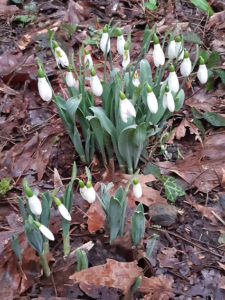
It’s a sign!
Traditionally Imbolc is the festival honouring the goddess Brigid (Brighid, Bride, Brigit). Brigid is the goddess of fire, healing, the Sun and of the hearth. She is the goddess of fertility, smithcraft and poetry. She also likes the colour green.
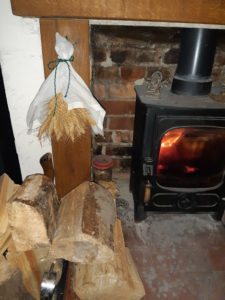
Goddess of the hearth
So what is so magical about the colour green?
Green is the colour of nature and it resonates with growth and expansion, stability and endurance. The darker shades of green usually associated with money. Green also symbolizes harmony, healing, fertility, hope, love and protection. These qualities correspond with Brigid and with the sun, that makes nature green to broaden our hearts and fill it with love and excitement of a budding new dream.
Imbolc symbolizes the awakening of nature, new beginnings and love which creates a magickal window to work some green magic.
Magic, prosperity, healing, protection, love and abundance are good themes to focus on at any time but will get a special boost if included in your Imbolc magical practice and on your Green magic altar.

Happy Imbolc and don’t forget to eat your greens:)
For further reading on Chaos Craft click HERE